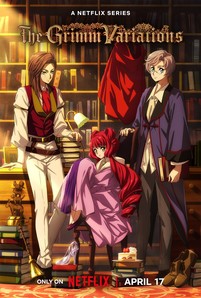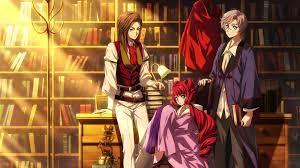Towards the conclusion of The Grimm Variations, Charlotte, the real-life younger sister of The Brothers Grimm (who were actually only two of many Grimm brothers), says she wishes more fairy tales were set in diverse locales or had protagonists who aren’t always good. The main issue with the anthology series is summed up in just one sentence: fairy tales are perceived as charming, sanitized children’s literature. Wilhelm Grimm started the process back in 1857 when he published the final Grimm-edited version of Children’s and Household Tales, despite the fact that we’re more inclined to blame Walt Disney for this. Grimm altered and modified the more genuine stories he and his brother had gathered and published back in 1811 to be more (Victorian) kid-friendly in this edition, which is mostly what many now consider to be the “original” book, presumably in an effort to increase sales. However, even in that case, you will be aware that Charlotte’s wish is founded on a misconception about fairy tales if you have read any of the works by Grimms, Charles Perrault, or Joseph Jacobs. She lies even in the earliest adaptations of the stories featured here; after all, a significant portion of Little Red Riding Hood’s tale revolves around the idea that she is bad, which is why she gets into problems in the first place. Not to mention the prince from Snow White trying to carry off a child’s lifeless body to store in his room, or the princess from The Frog King. This indicates that the foundation of The Grimm Variations is essentially faulty, both in its folklore elements and in its false claim that it is accomplishing anything very special with the stories it covers.
The second episode, the greatest of the six, is where you can see that the most. The episode, which is a retelling of Little Red Riding Hood (ATU333), emphasizes the sexual predator angle that is most prominently displayed in Charles Perrault’s adaptation of the story, Le petit chaperon rouge. In Perrault’s moral, it is made abundantly evident that the wolf is a human man and that Red, as a naughty girl, has “asked for” his attack by donning her red headpiece—a cap in French and German versions. The story type, according to folklorist Jack Zipes’ theory, is about sustaining the notion that women willingly participate in rapes; both earlier and later versions and retellings of the story have explored this issue in a number of ways. The Elliot Page movie Hard Candy, which has a Red who is exacting retribution on the wolf, is arguably the most comparable to the Grimm Variations’ telling of the tale. But in terms of folklore, it most closely resembles Charles Marelles’ Little Golden Hood, which is set in the Champagne area of France. In that version, Granny is a witch who not only avoids being devoured but also creates a magic hat that protects rather than harms her granddaughter. In the episode, Scarlet plays a vigilante who draws Gray in and gives him a harsh taste of his own medicine. Charlotte’s remark in the frame narrative that “surely, there must be other wolves” supports the feminist ideas of women reclaiming the authority that men like Gray attempt to take. Gray’s usage of the AR Oikumene eyedrops, which derive their name from both augmented reality and a Greek phrase meaning “the civilized world,” is an ironic way to illustrate the episode’s understanding of contemporary interpretations of the story, even if it depends on versions other than the Grimms’.

Regretfully, that is the only episode exhibiting such a thorough understanding of the material. While some episodes do continue to concentrate on the story points (which is significant because that’s how fairy tales are categorized in the Aarne-Thompson-Uther index), they frequently miss the mark. The majority of the other episodes rely on gimmicky attempts to rewrite the tales. Hansel and Gretel (ATU327, supposedly about abandoned children who learn to survive hard circumstances, usually involving cannibalism) is a wonderful example of an episode that lies somewhere in the middle. That final scene has been cut for the show, but it still has a lovely sense of claustrophobic horror because of the The Promised Neverland undertones. Two of the many kids in what looks to be an orphanage are Hansel and Gretel, who have grown interested in the outside world and the way other kids seem to occasionally disappear. A realistic interpretation of the original Grimms’ tale is that the school serves as essentially a safe haven for kids to develop their curiosity until they are ready to learn the harsh realities of life. The kids in Grimm’s story are taught some painful lessons about trust and self-preservation. The episode’s science fiction element is intriguing, but it isn’t utilized to the fullest extent possible—especially in light of Little Red Riding Hood, the episode’s precursor. Nevertheless, it is far superior to episode four, which aims to portray the story of The Elves and the Shoemaker.
I use the word “purports” because the majority of the episode gives off the impression that it was trying to be Rumplestiltskin, but someone gave up or became lost. This might boil down to the variations between the German and Japanese versions of ATU503 – The shoemaker and his wife are the only two “good” humans in German who interact with the elves; in Japanese folklore, there are often two types of individuals—one who is “bad” and the other who is “good,” with the former receiving rewards and the latter receiving punishment. The Grimm Variations retelling, which centers on an author whose writings are no longer selling and a mysterious power represented by a red-haired child, who seems to complete his terrible novels overnight as masterpieces, does not live up to either of those versions. Although it’s conceivable to interpret this episode as the author playing both good and evil roles, it doesn’t exactly work that way, and his lack of appreciation is inconsistent with the story of the same name. Although it’s simpler to think of the youngster as a Rumplestiltskin type who turns his straw into gold, it’s also not exactly ATU500 because she never begs for payment. Most of the time, though, the episode is just a mess—a retelling with no apparent aim and little to do with any of the various linked fairy tales—with the exception of an uncomfortable time jump towards the conclusion that transports us from the Showa era to the present day.
With a few variations added to meet the requirements of the anthology, the final three episodes—which cover Cinderella, The Bremen Town Musicians, and The Pied Piper of Hamlin—are all very simple retellings of their respective tale types. Little connections occur between each episode, despite the framing narrative seeming unnecessary. For example, the science fiction settings between episodes two and three, the 1920s between episodes one and two, and the final three episodes’ enigmatic redheads. Most of the music is classical, and each episode is often composed by a single artist. This strengthens the impression that these are old tales that have been updated for our enjoyment. (And fans of the BBC Pride and Prejudice series might know the tune Mary Bennet mangles as the major background song in Hansel and Gretel.) The artwork is exquisite, and although there are two particularly outrageous character designs (Scarlet and Dog), my main gripe is that the Grimms don’t fit the period, which I know is a ridiculous concern. Overall, the animation is excellent, with some of the best being in The Pied Piper of Hamlin when Maria flees her hamlet. It’s important to note that the second episode is extremely violent and has one scene of a blow job that is somewhat explicit in addition to sexual violence.
One of those programs that makes an effort is The Grimm Variations. Some of the stories are unrecognizable because it nearly tries too hard, while others—like The Bremen Town Musicians—play it too safe. It’s an interesting watch, but one that’s best viewed as an anthology series without the fairy tale link; I wouldn’t suggest it for folkloric interest.



